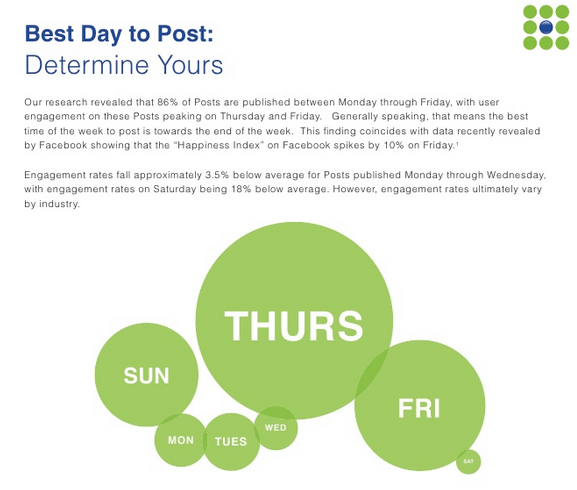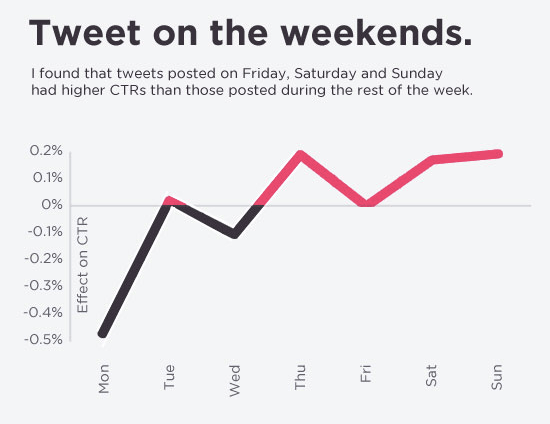Social media is a mysterious and multifaceted beast. Much like the Internet, the social media landscape evolves at a dizzying pace, making it very difficult indeed to keep up with the numerous changes and new platforms that crop up left, right and center. Especially if you aren’t a social media strategist by trade, and you’re simply trying to navigate the murky waters of digital marketing to, say, promote your personal blog posts or make sure your Facebook status gets seen by as many eyeballs as possible.
It isn’t easy, of course. By its very nature, social media is governed by the people who consume it. Indeed, you could spend hours on end crafting the perfect tweet, but if you release it into the world at the wrong time and no one is around to see it or share it, then you will have put in all that effort for nothing. Your success within the realm of social media, then, is directly tied to your content being exposed to the right people, in the right format, at the right time.
Because of the human factor in the equation, getting your social media strategy right can seem like a hideously complex, Herculean task. Luckily, the world has clocked on to the importance of social media in business in recent years and nowadays, there are only very few marketers who bypass these incredibly useful and valuable platforms.This means that extensive research on the topic is more in demand than ever, and specialists such as HubSpot, Buffer, or Coschedule are hard at work to provide us with the data we need to thrive in the social media jungle.
Sifting through all this information can seem pretty daunting, but never fear, we’re here and we’ve done it all for you! Whether you’re looking to become the next Facebook idol, get your content seen by anyone who’s anyone on Twitter, or develop a social media strategy that works for you or your business, timing is essential and we’ve got you covered. Ready to rock the social media world?
Facebook – How to choose the best times for your updates
Whether you have a Business Page or simply want to be the coolest kid on the Facebook block, it turns out that there are not only good times, but also good days to schedule your updates on. Indeed, a recent study by Buddy Media shows that posts published towards the end of the week – in this case, Thursday and Friday – receive much more engagement than posts published, say, on Monday through Wednesday. The study suggests that this may have some correlation with Facebook users’ states of mind throughout the week: iData released by Facebook indicates that these higher interaction rates on Thursdays and Fridays also coincide with spikes in the Facebook “Happiness Index”.
Could this mean that the less people want to work or the closer they are to the weekend, the more time they spend on Facebook, and the more likely they are to engage with the content posted there? Maybe so, but in any case, research suggests that the end of the week is probably an excellent place to start if you want to get your posts seen by as many eyes as possible.
Buddy Media – The best days to post on Facebook
But what about the best times to post? This, apparently, is more complicated to measure and depends largely on your audience. However, the consensus seems to be that the mornings before work or the evenings are a long shot. Instead, aim for the early afternoon, or more generally speaking any time between 9 am and 7 pm.
Your safest bet? Test it yourself with your Facebook Insights if you run a page! This super handy on-site application allows you to see when your audience engages the most with your specific content, allowing you to glean a far better understanding of their habits than any study ever will.
Did you know?
– Posts with photos get 39% more engagement than text posts.
– If you must write text posts, keep them at under 250 characters: they’ll get 60% more engagement.
– Even better than short text posts? Questions! They will get 100% more engagement.
Twitter: How to choose the best time to tweet
Much like Facebook, Twitter comes with its own set of codes and best practices and, most importantly, a very specific audience that checks in at very specific times during the day, and certain days rather than others. The thing is, because so many different people use Twitter, and for different purposes, it can be difficult to find straightforward answers as to when to dispatch that all-important tweet.
For instance, a researcher named Dan Zarrella found that engagement, measured by click-through rates, for brands was higher for tweets posted on Friday, Saturday and Sunday, while another think tank came to the opposite conclusion.
Dan Zarrella – Best days to tweet
As for the best time during the day to send your Twitter updates, again, the information varies from source to source and from metric to metric: indeed, whereas some groups suggest that the best time for getting more re-tweets seems to be around 5 pm, in terms of click-throughs, the best time appears to be around noon or 6 pm. Like I mentioned in the introduction, the difficulty with social media is that it depends on the most inconstant variable of all: humans!
This makes it difficult to determine exactly which strategy to follow in order to gain the most exposure for your content. Your best bet? Test, test, test! Much like with Facebook, the best way to develop a personalized strategy that’ll work for you and/or your business is by trying several different methods and seeing which one yields the best results. There are many tools out there that will enable you to get a clearer view of what your followers enjoy, and how and when they enjoy it best.
For instance, the Buffer web and mobile app allows you to not only schedule your tweets; it also gives you valuable insight on your audience’s habits, telling you which tweets were the most popular. By analysing this data, you’ll eventually be able to create a strong social media schedule, posting updates so that they get sent out to the right people, at the right time. Other tools, such as HootSuite, SocialBro and Tweriod are also extremely helpful for the same purposes.
Did you know?
– Twitter users prefer tweets with images – like on Facebook, these types of updates get higher engagement.
– Shorter tweets are more popular – tweets with less than 100 characters get 17% more engagement.
– Tweets that include links are 86% more likely to be retweeted. The same goes for tweets with hashtags – within reason.
What to remember
– Timing is difficult to get exactly right, and a big part of this is because we all have different schedules and routines for checking email or using social media. This means that no matter how many studies you read, or how much research you do yourself, the results of your social media strategy may not always be 100% consistent. Remember the human factor!
– Similarly, what works for some might not work for you, depending on your industry, your niche or your audience. This means that the best thing to do in order to create a social media strategy that works for you and your business is to do your own research. Ruthlessly test your methods against your very specific following and you’ll be that much closer to a bespoke solution.
Which social media platforms do you use most often? Which difficulties have you bumped into while using them, and how have you overcome these challenges? Answer in the comments!
Featured photo credit: Pexels via pexels.com














































